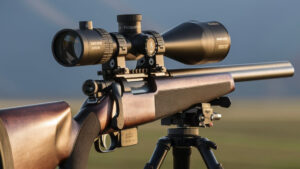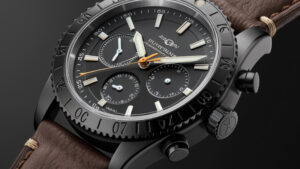Choosing the right tennis racket is crucial for beginners. It can improve your game and make it more enjoyable.
Recommended Best Tennis Rackets 2025
| Recommendation | Product |
| Best Overall | HEAD Ti S6 Tennis Racket |
| Popular Choice | Wilson Profile Adult Recreational Tennis Racket |
| Best Value | HEAD Graphene XT Speed MP Tennis Racket |
| Best Budget | Senston Tennis Rackets for Adults |
| Another Excellent Pick | WOED Adult 2 Player Tennis Racket |
So, how do you pick the best one? Starting tennis can be thrilling yet overwhelming. The right equipment makes a big difference. A suitable racket helps you learn faster and play better. But, with so many options, selecting the perfect racket can be confusing.
Beginners need to consider weight, grip, and balance. These factors influence your comfort and performance on the court. Understanding these basics is essential before making a purchase. In this guide, we’ll help you navigate through the choices. You’ll learn what to look for in a beginner’s tennis racket. This knowledge will make your decision easier and enhance your tennis experience from the start.
Finding The Right Size
Choosing the right size of a tennis racket is crucial for beginners. It can significantly impact your comfort and performance on the court. Finding the right size involves considering two key aspects: grip size and racket length. Let’s dive into each.
Grip Size
Grip size is about how the racket feels in your hand. A comfortable grip can enhance your control and prevent injuries. The general rule is: if the grip feels too big, it’s harder to hold and control; if it’s too small, it might lead to strain.
To determine the right grip size, try using the “finger test”. Hold the racket as you normally would and slide your index finger of your other hand between your palm and fingers. If the finger fits snugly, the grip size is just right. If there’s too much space or it’s too tight, consider adjusting the grip size.
What grip size do you use currently? Do you feel any discomfort while playing? It’s worth experimenting with different sizes to find the best fit for your hand.
Racket Length
Racket length affects your reach and power. Longer rackets offer more reach and can be beneficial for serving, but they might be harder to maneuver for beginners. Shorter rackets are easier to control but offer less power and reach.
Standard adult rackets are usually around 27 inches long. As a beginner, starting with a standard length might be the best choice. It provides a balanced combination of reach and control.
If you’re unsure about the length, visit a sports store and try swinging a few rackets. Feel how they handle, especially during your serve. This hands-on approach can help you choose the perfect length for your needs.
Have you ever tried different lengths before? Did you notice a difference in your swing or control? These little experiments can lead to big improvements in your game.
Choosing the right size for your tennis racket can make a world of difference in your playing experience. By focusing on grip size and racket length, you set yourself up for a more enjoyable and effective time on the court. Happy playing!
Understanding Weight
Choosing the right tennis racket involves understanding weight, grip size, and string tension. Lightweight rackets offer easy handling for beginners. Comfortable grip size ensures better control during play.
Choosing the right tennis racket is an essential step for beginners. Understanding the weight of a racket can significantly impact your performance. Weight affects how you swing, the power you generate, and your control over the ball. Picking the right weight can make tennis more enjoyable and improve your skills faster.
Lightweight Options
Lightweight rackets generally weigh less than 10 ounces. They are ideal for beginners because they are easier to handle and swing.
A lighter racket allows you to focus on your technique without feeling overwhelmed by the weight. If you’re new to tennis, you might find a lighter option less tiring during long practice sessions.
Ask yourself: Do you want to focus on speed and agility? If yes, a lightweight racket might be your best friend.
Medium And Heavy Choices
Medium rackets range from 10 to 11 ounces. They offer a balance of power and control, suitable for those who have started getting comfortable with basic strokes.
Heavy rackets weigh over 11 ounces. They provide more power and stability, but require better technique and strength to handle effectively.
If you’re transitioning from beginner to intermediate, consider whether you’re ready for the extra power that comes with a heavier racket. Are you prepared to handle more impact and drive the ball with precision?
In my early tennis days, I switched from a lightweight to a medium racket as my skills improved. It challenged me to refine my technique and boosted my confidence on the court. Would you be willing to make similar adjustments to enhance your game?
Material Matters
Choosing the right tennis racket involves many factors. Material plays a vital role in your decision. The material affects the racket’s weight, feel, and performance. For beginners, understanding materials can improve your game experience. Let’s explore popular racket materials.
Graphite Vs. Aluminum
Graphite rackets offer better control and power. They are lightweight, making them easy to handle. This material helps absorb shock, reducing the risk of injury. Graphite is more expensive but provides a solid feel.
Aluminum rackets are budget-friendly. They are heavier, which can offer stability. Beginners may find them less flexible. Aluminum rackets are durable and suitable for casual play.
Composite Rackets
Composite rackets combine different materials. They offer a balance between graphite and aluminum. These rackets provide decent control and power. They are lighter than pure aluminum rackets. Composite materials can include carbon fiber or fiberglass. This option suits players seeking performance and affordability.
Consider your skill level when choosing material. Test different rackets to find your comfort zone. The right material can enhance your learning curve. Make an informed choice to enjoy tennis more.
Head Size Considerations
Choosing a tennis racket involves considering head size. Larger head sizes offer a bigger sweet spot, aiding beginners in hitting the ball. Smaller heads provide more control, suitable for those seeking precision.
Choosing the right tennis racket can be daunting for beginners. One crucial aspect is the head size. The head size affects your play style and comfort on the court. Understanding this can make your learning experience more enjoyable and productive.
Oversized Heads
Oversized rackets have a larger surface area. This means you have more room to hit the ball. It’s like having a bigger target, which is a blessing for beginners.
A larger head offers more power. If your swing is not yet strong, an oversized racket can help. You’ll feel more confident with each shot.
Some people worry about control. But as a beginner, you might find the added power and forgiveness more beneficial. Ask yourself, are you looking for extra help with your swing?
Standard Head Sizes
Standard head sizes are smaller than oversized ones. They offer more control and precision. If you’ve played a bit before, this might suit you better.
These rackets require a stronger swing. They don’t give as much power as oversized rackets. But they allow you to place shots more accurately.
Think about your goals. Are you aiming to improve your precision and control? If so, standard head sizes might be the way to go.
As you choose, consider what feels right in your hand. Test different sizes if possible. Finding the right fit can make all the difference in your game.
Balance And Control
Choosing the right tennis racket involves understanding balance and control. These factors affect your game significantly. Balance refers to the racket’s weight distribution. Control involves how easily you can maneuver the racket. Both are crucial for beginners. They help in gaining confidence and skill.
Head-heavy Rackets
Head-heavy rackets have more weight in the head. This design provides more power. Beginners find it easier to hit powerful shots. The extra weight aids in driving the ball further. It’s beneficial for baseline players. You might notice less control, though. These rackets suit players with short swings.
Head-light Options
Head-light rackets distribute weight towards the handle. This offers better control and maneuverability. They are excellent for net play. Players can react quickly to fast balls. This type is ideal for those improving precision. The lighter head means less power. Suitable for players with longer swings.
String Type And Tension
Choosing the right string type and tension is essential for beginners. Softer strings offer more comfort and power, while tighter tension provides control. Experimenting helps find the perfect balance for your playing style.
Choosing the right tennis racket involves more than just picking one that looks good. One crucial aspect is understanding the string type and tension. This detail can significantly influence your game, affecting control, power, and comfort. String type and tension are often overlooked by beginners, but getting this right can make a big difference. Let’s dive into the different types of strings and how their tension impacts your play.
Synthetic Strings
Synthetic strings are a popular choice for beginners. They’re affordable and versatile, making them a great starting point. These strings are made from materials like nylon or polyester, offering durability and ease of use.
Nylon strings are softer, providing more comfort and playability. Polyester strings offer more durability and spin. As a beginner, consider what suits your play style and comfort level.
When it comes to tension, tighter strings offer more control, while looser strings give more power. If you’re just starting, you might prefer a lower tension for added power and a larger sweet spot.
Natural Gut Strings
Natural gut strings are often considered the gold standard. They offer unmatched comfort and feel, making them a favorite among professional players. However, they come with a higher price tag.
The natural composition provides excellent tension retention and power. This can be beneficial as you develop your skills and gain more control over your shots.
If budget allows, trying natural gut strings can enhance your playing experience. But remember, they require more care and maintenance due to their delicate nature.
Have you thought about how these strings affect your game? Whether you choose synthetic or natural gut, understanding your string preference can elevate your tennis experience. Consider experimenting with both types to find what feels right for you.
Price Range Guide
Choosing the right tennis racket is crucial for beginners. The price of a tennis racket can vary greatly. Understanding the price range helps in making an informed choice. This guide will explore options for every budget. Whether you want a budget-friendly racket or a premium one.
Budget-friendly Options
New players often prefer budget-friendly options. These rackets are affordable and practical. They provide good value without breaking the bank. Brands like Wilson and Head offer great choices. These rackets have basic features suitable for beginners. They are lightweight and easy to handle. Perfect for learning the basics of tennis.
Premium Choices
Some beginners may opt for premium rackets. These rackets offer advanced features and materials. They provide better control and comfort. Well-known brands like Babolat and Yonex produce these rackets. They are more durable and offer better performance. Though they are costlier, they last longer. A good investment for those serious about tennis.
Testing Before Buying
Choosing the right tennis racket involves testing before buying. For beginners, try rackets with different weights and grips. This helps find a comfortable fit that enhances performance and enjoyment on the court.
Choosing the right tennis racket can significantly impact your game, especially if you’re a beginner. It’s not just about picking the most popular brand or the flashiest design. Testing before buying gives you a firsthand feel of how a racket suits your playing style. This process helps prevent costly mistakes and ensures you enjoy the sport. Let’s explore how you can make an informed decision by testing rackets.
Demo Programs
Many sports stores offer demo programs that allow you to try rackets before purchasing. These programs usually let you borrow a racket for a few days or even a week. It’s a fantastic way to test different weights, grips, and string tensions.
Imagine testing a racket during your usual practice session. You’d quickly notice if it feels comfortable or if it’s too heavy, affecting your swing. Plus, demo programs often cost just a fraction of the racket’s price, making them an affordable option for beginners.
Check with your local sports store or tennis club about their demo options. You might find a racket that feels like an extension of your arm.
Feedback From Coaches
Your coach is an invaluable resource when selecting a tennis racket. Their experience and knowledge can guide you in the right direction. They understand your strengths and areas for improvement, making their input highly relevant.
Imagine your coach observing you during a practice session with a demo racket. They might notice how the racket’s balance affects your serve or how its grip influences your backhand. Their feedback could be the difference between choosing a racket that helps you excel and one that hampers your progress.
Engage your coach in your decision-making process. Ask them what they think about the rackets you’re considering. Their insights could save you time and enhance your learning curve.
Testing rackets before buying isn’t just about avoiding buyer’s remorse. It’s about making sure your choice supports your growth and enjoyment in tennis. Have you tried a racket that made a noticeable difference in your play? Share your thoughts and connect with others on the same journey!

Frequently Asked Questions
How Do I Choose My First Tennis Racquet?
Choose a racquet with the right grip size and weight for comfort. Beginners benefit from lightweight racquets. Opt for a larger head size for a bigger sweet spot. Consider your playing style and skill level. Test different racquets to find the best fit for your needs.
What Tennis Racket Should I Get As A Beginner?
Choose a lightweight racket with a larger head size for better control and power. Opt for a comfortable grip to enhance your performance. Brands like Wilson, Babolat, and Head offer excellent beginner options. Visit a local store to test different models and find the perfect fit for you.
How Do You Know Which Tennis Racquet Is Right For You?
Choose a tennis racquet based on your skill level, playing style, and comfort. Test different racquets for weight, grip size, and balance. Consult experts or reviews for recommendations. Ensure the racquet suits your swing speed and provides control. Personal preference is key in finding the perfect match.
What Size Tennis Racket Do I Need As A Beginner?
Choose a tennis racket with a grip size between 4 to 4 3/8 inches. Opt for a lightweight frame, around 9 to 11 ounces. A head size of 98 to 110 square inches offers a good balance of power and control for beginners.
Always consider comfort and ease of handling.
Conclusion
Choosing the right tennis racket is key for beginners. It helps improve your skills. Consider weight and grip size when selecting. These factors affect comfort and play. Also, think about the racket’s material. Different materials offer various benefits. Visit a store to try rackets before buying.
Feel the balance in your hand. Ask for advice if needed. Remember, the best racket suits your needs. With the right choice, you can enjoy the game more. Happy playing!








